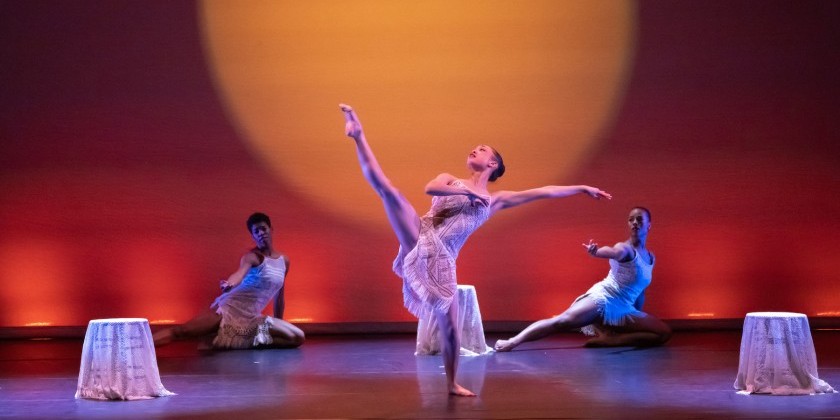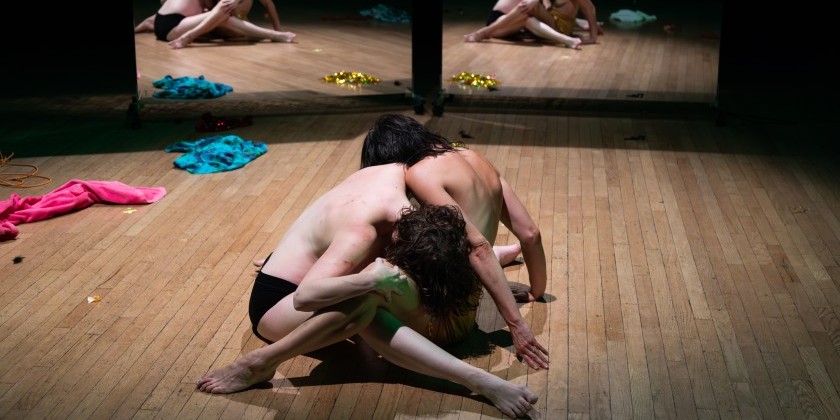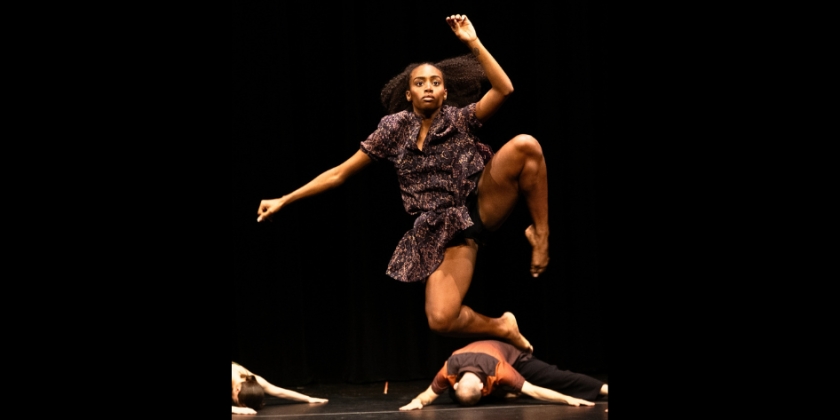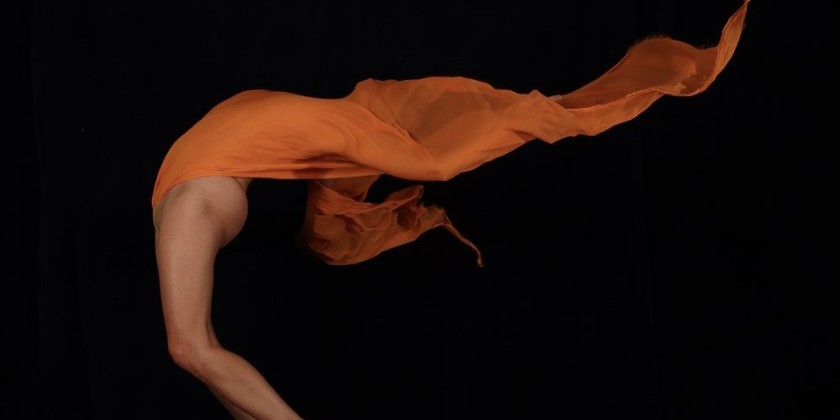IMPRESSIONS: Martha Graham Dance Company in “Radical Dance for the People” at the Metropolitan Museum of Art
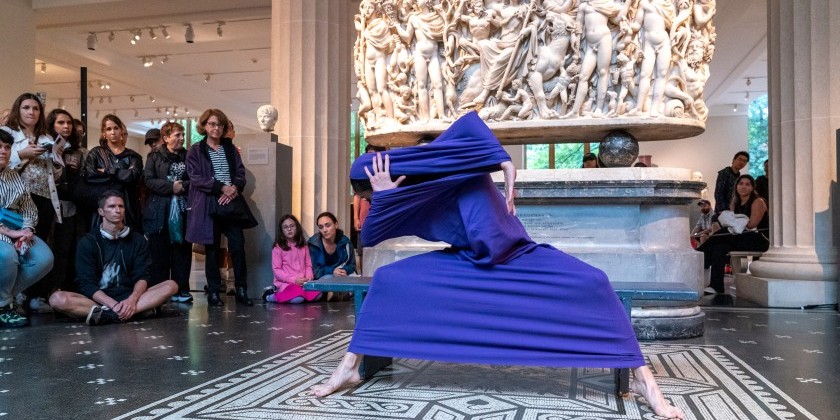
In conjunction with the exhibition "Art for the Millions: American Culture and Politics in the 1930s"
GRAHAM100 — The First and The Future, September 2023-2026
2023-24 season: American Legacies
MetLiveArts, Martha Graham Dance Company: Radical Dance for the People
Immediate Tragedy (1937), The American Wing, The Charles Engelhard Court, Dancer Xin Ying
Lamentation (1930), Greek & Roman Art, Leon Levy and Shelby White Court, Dancer So Young An
Satyric Festival Song (1932), The American Wing, The Charles Engelhard Court, Dancer Marzia Memoli
Spectre-1914 (1932), Egyptian Art, The Temple of Dendur, Dancer Xin Ying
Ekstasis (1933), Asian Art, Astor Chinese Garden Court, Dancer So Young An
Deep Song (1937), Egyptian Art, The Temple of Dendur, Dancer Marzia Memoli
WHERE: Metropolitan Museum of Art
WHEN: October 7 & 10, 2023
Six solos from the 1930s, choreographed by Martha Graham, some familiar, others newer to my eyes, were presented at the Metropolitan Museum of Art from midmorning to late afternoon on October 7th and 10th in MetLiveArts: Radical Dance for the People. The 2023–24 Graham season, American Legacies, focuses on Graham’s social activism, Americana, modernism, and her artistic collaborators. The performers, So Young An, Marzia Memoli, and Xin Ying, strike the right chord of emotional and physical balance.
Powerful and undeniably original, the spare solos, situated in galleries that well-frame the dances, provide a glimpse into the nascency of Graham’s lasting and influential art. The dances make clear the astounding precocity of Graham’s artistry. Janet Eilber, Artistic Director of the Martha Graham Dance Company explains, “Martha was using her own body on which to experiment. Her body was her material.” Extreme positions with determined embodied honesty reveal Graham’s ruthless and unflinching rigor. The subject matter ranges from protesting war, to mourning, to comedy. Except for Lamentation and Spectre 1914, danced to their original scores, the other accompaniments were lost. Graham’s signature movement, pelvic contraction, evoking sexual tension, is evident though not as pronounced as in later works. The ‘contraction’ forms the foundation of her widely influential dance technique.
Many of the solos were revived based on Barbara Morgan photographs, Soichi Sunami photographs, press reviews, interviews, writings, former company members’ recollections, and before Graham’s death in 1991, Graham’s recall. A thorough knowledge of the Graham technique allows the person reconstructing to deduce how “one pose logically moves to the next pose,” says Eilber. The scarcity of information contributes to the limited number of shapes. Graham’s output was prodigious, yet few of her choreographies survive. Film was expensive and the appetite to notate dances was not requisite, as it is today.
The reconstruction of Satyric Festival Song (1932), on Eilber, in 1994, included the memories of early MGDC members, Sophie Maslow and Jane Dudley, among others. They were asked from where, on stage or off, did Graham begin the dance? Since the Morgan photos were in black and white, what were the colors of the costume?
Though helpful, the memories were not definitive as each contributor envisioned the details differently. However, they agreed on what Eilber calls Graham’s “attitude,” her sense of humor. Graham was mocking herself. Native American rituals that included clowning, and Greek Satyr plays, that provided comic relief, influenced the choreography of this dance.
The exuberant performance of the 3 ½ minute solo by Memoli, against the white limestone façade of The Charles Engelhard Court, hit the right note of cheekiness and verve. The yellow, green and black horizontally striped ankle-length dress, designed by Graham, accentuated a repeated shape of angular arms and horizontal hip thrusts, the insouciant sway of the pelvis from side to side, and an occasional roll. Dancing barefoot on the granite floor, long, crimped hair flying, Memoli pounded her bottom with closed fists and galloped on the diagonal, fists bumping thighs. Her facial expression while covering one eye or both, ambulated between amused seriousness and mugged playfulness.
Another standout performance, located in the Astor Chinese Garden Court, was that of the exquisite An in Ekstasis, reimagined from limited documentation by former MGDC principal and current director of Graham 2, Virginie Mécène. Graham, in a 1980 interview, said she discovered a pelvic thrust gesture, the ‘contraction’, on which the 1932 dance was based.
An, dressed in a body-hugging floor-length sheath, transcendently performed Ekstatis. Long, sharp notes of flute with rumblings of a drum by Ramon Humet, accompany An as she pushes into an extreme side lift. Her arms open onto to the upper diagonals and her hip pushes far to the side. This shape processes in a circle. A pelvic contraction forces small, tight turns. Her hand traces the line of her body. The twisted stone statuary, gnarled tree, and brick floor contrast with An’s smooth transitions and extreme tension as she fluidly moves from shape to shape.
Ying authoritatively performed Immediate Tragedy (1937), a meditation on war, and Spectre-1914 (1932), a scathing comment on fascism. One of the most developed solos, Spectre-1914, to Wallingford Riegger's composition, integrates the costume, a long, flowing black dress lined in red, as a shifting character in the dance.









